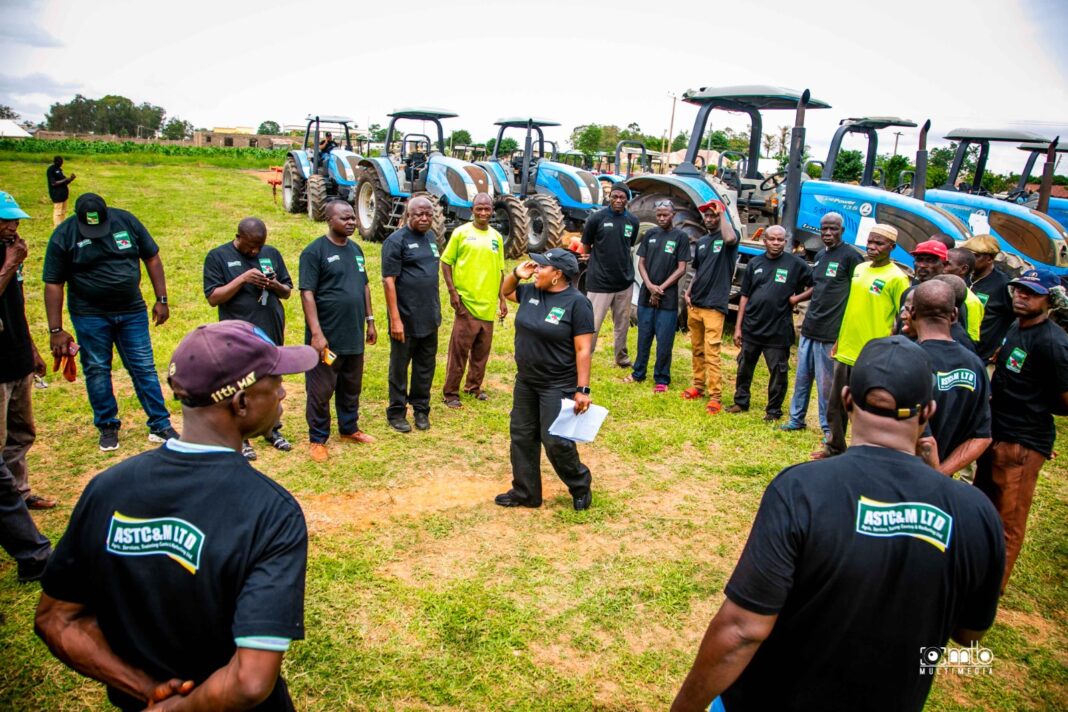
By Emma Dung
The slogan on everyone’s lips in Plateau State is: “The Time is Now; The Land is Green.” Beyond the signature white and green colours associated with the State Governor, Caleb Mutfwang, the State is aggressively pursuing peace and agriculture to drive its economy.
The Governor has consistently stressed the urgent need to secure the land and the people saying, “The Time is Now to secure the future of the people and to make a deliberate effort to develop the land for the people, by the people, and with the people.”
To make good his promises, the Governor in collaboration with other critical stakeholders is working to maintain relative peace in the State.
He has directed a large-scale mechanized cultivation of thousands of hectares of land to boost food security, empower the people, and secure the land.
Recall that many communities in the State have been deserted due to senseless attacks by armed men and last year, the Governor directed that 900 hectares of land be cultivated to ensure the land doesn’t lay fallow.
This year, apart from delineating the State into three crop zones for the cultivation of crops of comparative advantage on 4,000 hectares of land in each zone, the State-owned Agriculture Services Training Centre and Marketing Limited, ASTC, has commenced the cultivation of 6,000 hectares of land in the displaced communities to ensure their source of livelihood is restored.
Speaking on his efforts to drive the State’s economy, the Governor said, “We have been tackling the security challenges but after security, we have to survive. In addressing the challenges of poverty, we looked at building the Plateau economy that is sustainable beyond oil revenue using some critical economic drivers like agriculture which is natural to us.
“Food production in the State has dropped because of the challenges, we had earlier mobilized resources and got the ASTC to cultivate 900 hectares of land for the displaced communities but it was late, they could not plant much, only soybeans.
“This year, we have divided the State into three agricultural zones, the Southern belt will focus on the local governments that have the advantage in rice, palm oil, and yam production. We are working at achieving international standards in food production.
“In the Central belt, there is a strategic advantage in Irish potatoes and maize production. We will aggressively promote the marketing of acha (fonio).
“The Northern zone primarily produces fruits and vegetables, coffee, flowers, and wheat, at least 4,000 hectares of land will be cultivated in each zone to boost food production. We must not lose our contribution to the nation’s food basket.
“We are also looking at reducing post-harvest losses that is why we set up the Plateau Commodities Market company to improve the marketing opportunities available to farmers.”
6,000 Hectares cultivated in Displaced Communities
To assist the displaced persons in earning a living, the Governor directed an extensive mechanized farming intervention for 6,000 hectares of land across the communities using the ASTC.
Flagging off the exercise on Monday in the Mangu Local Government, the State Commissioner for Agriculture and Natural Resources, Mr Samson Bugama, reiterated the Governor’s concern about the displaced persons and efforts being intensified to return them home.
His words, “Today marks the beginning of a comprehensive engagement in the field. The strategy is to provide mechanization services to displaced communities and help them return to their livelihoods.
“The governor has commissioned the mechanization service intervention. We are targeting 6,000 hectares as resources are available and would do the minimum of 3,000 hectares. We will provide seeds to bring a bumper harvest and provide food.
“The intervention focuses primarily on displaced communities. However, the scope may extend to other areas as resources allow. Our major goal is to resettle displaced communities back into their farming activities.
“Governor Mutfwang is deeply concerned about the hunger problem, and this intervention is a deliberate effort to boost food production and reduce prices.”
The Managing Director/Chief Executive Officer of ASTC, Ms. Susan Bentu, explained that the four-week cultivation period would cover areas in the three Zones of the State, with a focus on maize, potatoes, and rice, depending on the zone.
She noted, “ASTC is a household name, we are dedicated to assisting farmers, whether in rain-fed or dry seasons. This intervention programme which starts from crop cultivation to harvest is free, the State government covers all the costs.
“The cultivation will last for about four weeks, the communities in the Northern Zone are Jol, Wereng, Kwi, Rim, Bachit, Sho, Vom-Chol, some parts of Jos East, and the BARC Farms.
“The Central Zone will cover; Tam, Aloghom, Vodni Pushit, Changal, Kombili, Washna, Larkas, Longkat Irrigation, Chip, Mabel, Butura, Manguna, and Mbar communities. The Southern Zone will include Wase River, Shendam Dam, Jenta Yelwa, Shimangkar, Pandam, Sabon Gida, Namu, and Gidan Adamu.
“Our vision is to raise self-sufficient farmers, financially stable and empowered, contributing to the State’s food security and economic stability.”
She stressed, “The intervention in mechanized farming for farmers, is principally in displaced areas as well as for those in large clusters.
“There is a youth empowerment programme that has also been approved and we will be cultivating for the youths at BARC farms. We will go to the three Senatorial zones on different days.
“It is an intensive programme and we are set to change the narrative where agriculture is a concern in the State. For each zone, we will concentrate on their areas of strength, the zones have been designated into crop zones.
“The outcome of the intervention last year was awesome, the communities are calling for more, in the first phase, we had 900 hectares, this time, we have more than tripled the scope of operation.
The ASTC has a fleet of 300 tractors with a big capacity, 165 horsepower, the personnel are motivated, ready and willing to deliver.”
Meanwhile, to ensure the safety of the crops, local self-help and the service of the Agro-Rangers of the Nigeria Security and Civil Defence Corps, NSCDC have been mobilized for early warning signals as Bugama assured that the government would not allow “the wastage of government investment in the communities.”


